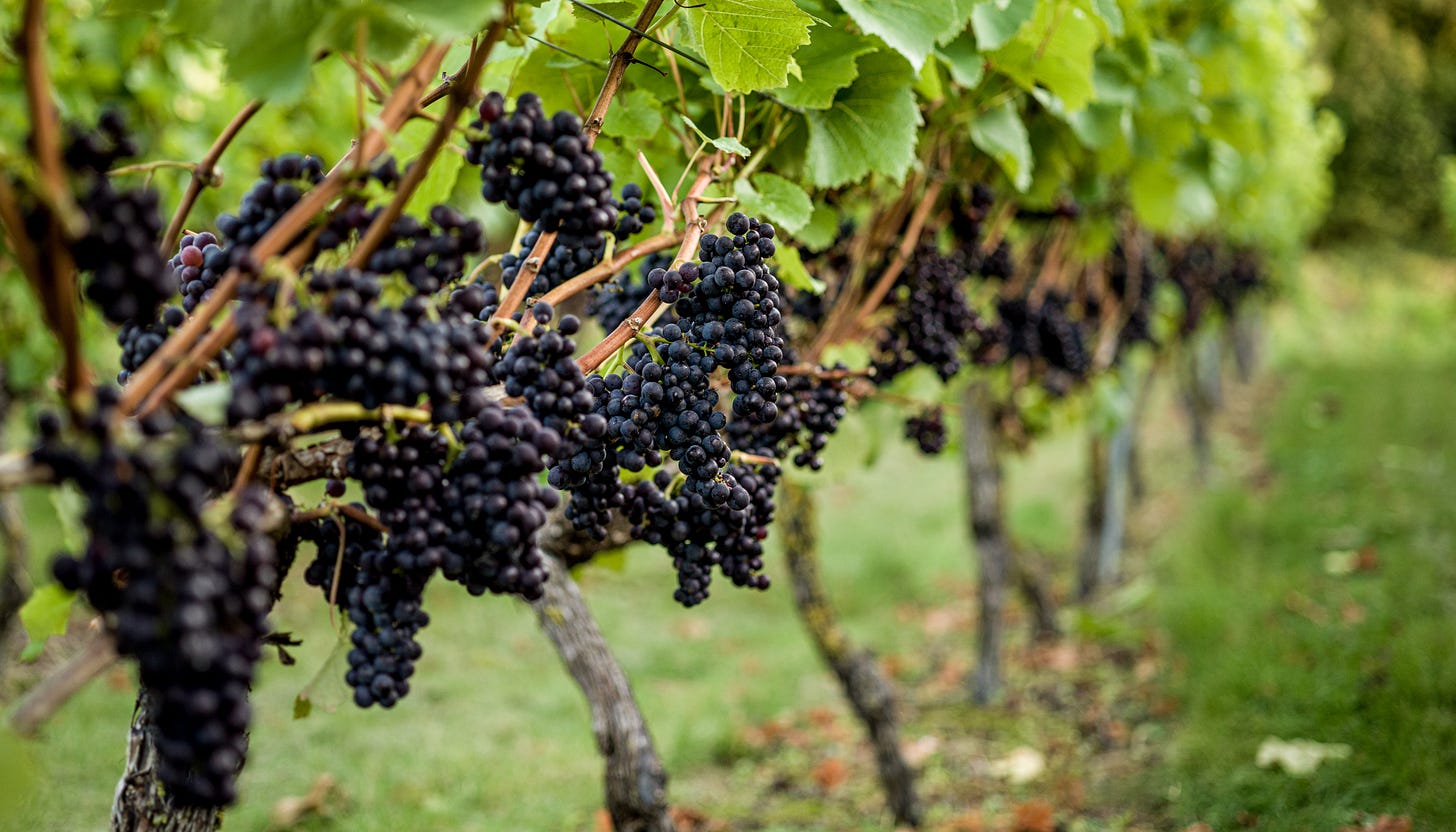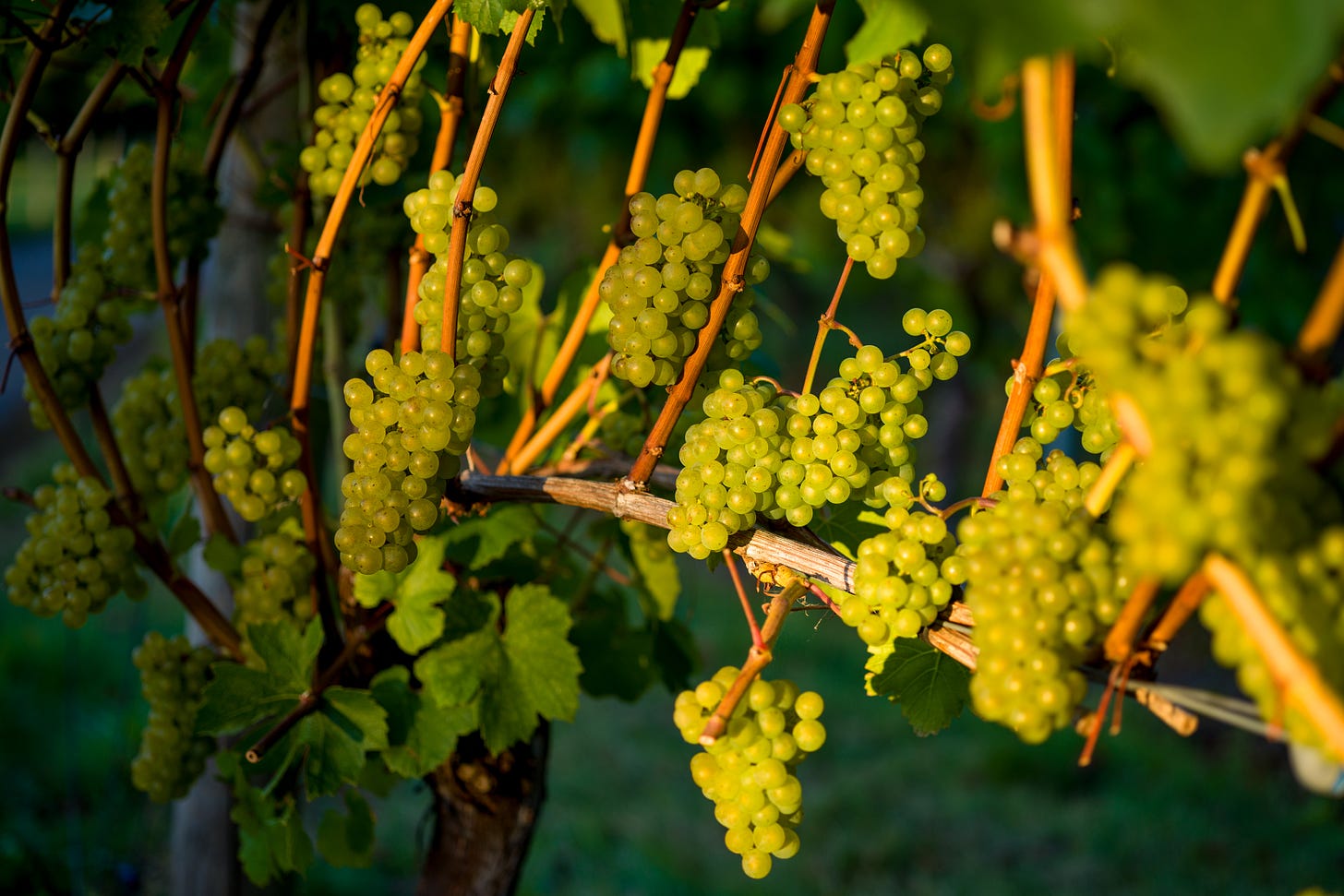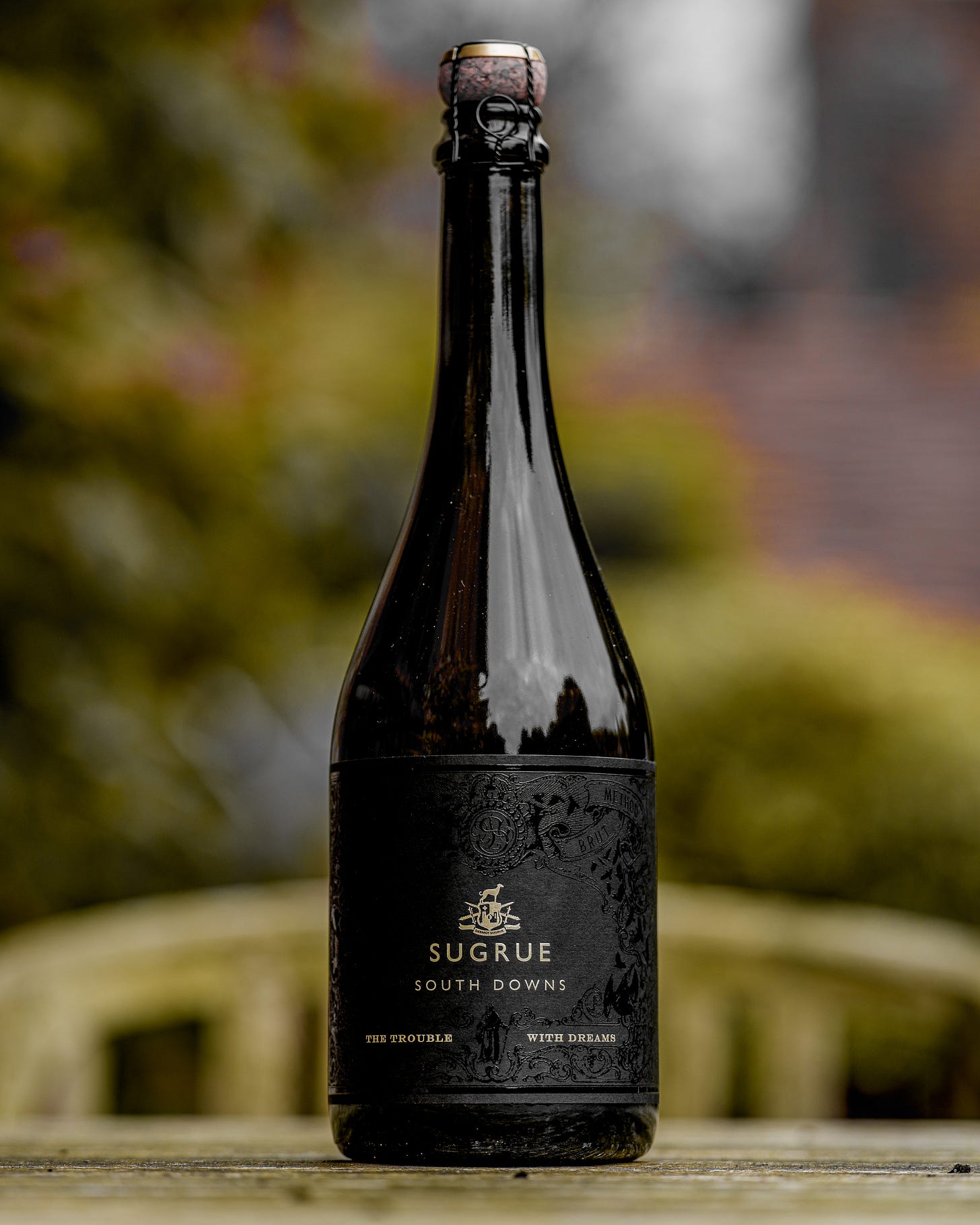Over 1,000 Vineyards in UK
..... and growing year-on-year .....
With English Wine production expanding significantly over the last two decades, and now with over 1,000 vineyards in the UK according to the Food Standards Agency Wine Team, then this missive looks back to assess how this has been achieved; what are the predictions for the future; how inward investment might shape the industry; consumer perceptions of pricing; and finally a new wine that is worth buying and putting in the cellar for several years.
1 - Historical Context
In Tom Stevenson’s book, ‘World Encyclopaedia of Champagne & Sparkling Wine’, it clearly identifies that the original American owners of Nyetimber had ‘a crazy ambition to make top-quality English fizz from classic Champagne (grape) varieties’, thereby laying the roadmap for the extensive growth of sparkling wine using the Méthode Champenoise, and mainly from Pinot Noir, Chardonnay, and Pinot Meunier grape varieties, across England. These three varieties account for 68% of all UK plantings.
Many of the larger wineries that have arrived over the last two decades have been created by English families who have made significant fortunes in law, the City, real estate, hotels, etc. Instead of starting a winery in France or Italy, they have built successful operations across the South East of England straddling Hampshire, Sussex and Kent. These individuals have pulled together talented teams of winemakers and vineyard managers with the stated ambition to make the best possible sparkling wine. For a relatively young industry, the quality bar has been set at a very high level.
2 - Future Potential
In 2018 WineGB, the trade organisation responsible for this sector, published a report predicting that the UK would have approximately 45,000 acres under vine by 2040, with a production around the 40m bottle mark. With around 70% of current production being sparkling wine, this was anticipated to grow to around 90% over this period. To put this into context, the Champagne region sells around 300m bottles every year, so the UK will be a relatively small niche region for very high quality sparkling wine.
Figures from the Food Standards Agency show that production in 2023 was just short of 22m bottles. With the area under vine having grown by 123% over the last decade, then if the rate of plantings continues at current levels, the prediction of 40m does not seem unrealistic. However, talking to a vineyard manager last week, the poor weather at the beginning of this summer, the overall high rainfall and lack of sunshine, will probably see a downturn in overall production for 2024. France is predicting a possible drop of approximately 16% in overall production for this year due to poor weather conditions across the country.
England is defined as a cool climate wine growing region, thereby producing wines that have wonderful acidity: perfect for creating high quality sparkling wine.
However, climate change is one factor in this equation that has made England a commercially viable location to grow grapes. As important is a greater knowledge of how to make wine that has grown over the last 40 years. The investment in enhancing the knowledge base of growing grapes has been led by the established universities in Europe’s main wine regions as well as UC Davis in California, starting life as the agricultural college of the Berkeley campus, and the Australian Wine Research Institute based in Adelaide. This global knowledge base has enabled many regions around the world to start producing quality wines in locations that 50 years ago would not have been considered viable.
Overall, with the sale of English Sparkling Wine having increased by 187% since 2018 and production accounting for 76% of all wine made in the UK, then the overall picture looks very promising.
3 - Inward Investment
The endorsement of the UK’s ability to produce top-notch traditional method sparkling wine, Méthode Champenoise, can easily be assessed by the arrival of international players into the market. The first to plant vines in the UK was Pommery Champagne who have around 150 acres in Hampshire. Then came Taittinger with 250 acres in Kent. The world’s largest sparkling wine producer, Henkel Freixenet, bought Bolney Wine Estate in West Sussex two years ago, and the Symington Family - owners of Cockburn’s, Warre’s, Graham’s and Dow’s Port brands, amongst a host of others - bought Hampshire’s Hambledon Vineyard in a joint purchase with Berry Brothers & Rudd earlier this year.
Perhaps the most significant recent development was the arrival of Kendall-Jackson, and their announcement to build a winery in Essex. Kendall Jackson is the second largest family-owned wine producer in America, behind Gallo, and they have poached the very talented CEO/Winemaker from Gusbourne, Charlie Holland, to establish their UK operation. With 5,500 hectares planted in the USA and across subsidiaries in Australia, South Africa, Chile, France, and Italy, this is a strong commitment from a global player.
The Champagne Houses have a bit of form in this arena. When California was identified in the 60s as a region that could grow high quality grapes and make exceptional wines, the French decided they needed to be in on this game: 1973 Moët & Chandon launched Domaine Chandon in Napa Valley, followed by Mumm, Roederer, Taittinger, as well as Cava House Ferrer from Barcelona.
These international operations bring a number of critically important factors into the UK’s industry. First, knowledge: collectively they have hundreds of years of experience. Secondly, capital and funding: producing high quality sparkling wine requires significant levels of investment. Thirdly, and perhaps the most important, global distribution. As their UK brands will be sold through their existing and well-established global agents, the generic awareness of English Sparkling Wine will grow at a significantly faster rate than could be achieved by the UK’s own individual brands.
4 - Pricing
There is a perception amongst consumers that English Sparkling Wine remains expensive in relation to Champagne. Go back a decade, and the retail price from the top UK producers matched that of well known brands from Champagne: the price of Nyetimber, Chapel Down, Hattingley, Hambledon, etc., sat around the £30 mark as did non-vintage Veuve Clicquot, Roederer, Taittinger and Bollinger. Move to 2024 and the RRP of the main UK brands still sits around £30, but the Champagne Houses have escalated to £45-£50.
There is now clear water between the top-end English offerings and the primary, high quality, retail-shelf Champagne brands. Priced around two-thirds of the ‘competition’, English Sparkling Wine from the quality-focused brands is now exceptional value. In a blind tasting, differentiating between the brands listed above would be tricky for most consumers who would happily spend at this level for a sparkling wine.
Still wines are another story. Looking across a number of multiple and merchant sites, the price of English Still Wine seems to range from £14.99 to £26.99, ignoring price promotions. With very good wines from South Africa, Chile, Australia, and even France, in this price bracket, then the competition is fierce. However, one winery in Kent is perhaps moving in an interesting direction. Simpsons, owned by the utterly charming Ruth and Charles Simpson who have a 40 hectare winery in the Languedoc, are making magnums of Pinot Noir and Chardonnay at £100 per magnum. The 2020 Chardonnay is akin to a Premier Cru Chablis, and needs time to show its full potential. The 2022 Chardonnay and Pinot Noir will feature in a future missive, as will the excellent Kit’s Coty Chardonnay from Chapel Down.
5 - A Wine That Needs Time
Sugrue, The Trouble With Dreams 2019, South Downs, England
£44.10 - Winery website.
Dermot Surgrue, alongside Cherie Spriggs from Nyetimber, Charlie Holland from Gusbourne (see above), and Emma Rice from Hattingley (recently departed and now a consultant), must have been awarded more gold medals for English Wines than the rest of the industry put together.
Dermot was the winemaker at Wiston and created stunning wines for that estate as well as producing wine for many others vineyards, and this is his new venture with his wife Ana, who is also a winemaker.
This is an exceptional glass of wonderfully crafted English Sparkling Wine from 60% Chardonnay and 40% Pinot Noir. Grown on three very specific sites across the South Downs, the nose reveals flavours of oatmeal and green apples, and then the palate lingers providing depth and intense character with creamy baked apples alongside lemon-tinged acidity. It is outstanding today, but will yield an even better wine if left in the cellar for another 5-7 years. Think early 2030s before drinking with lobster or langoustine.




